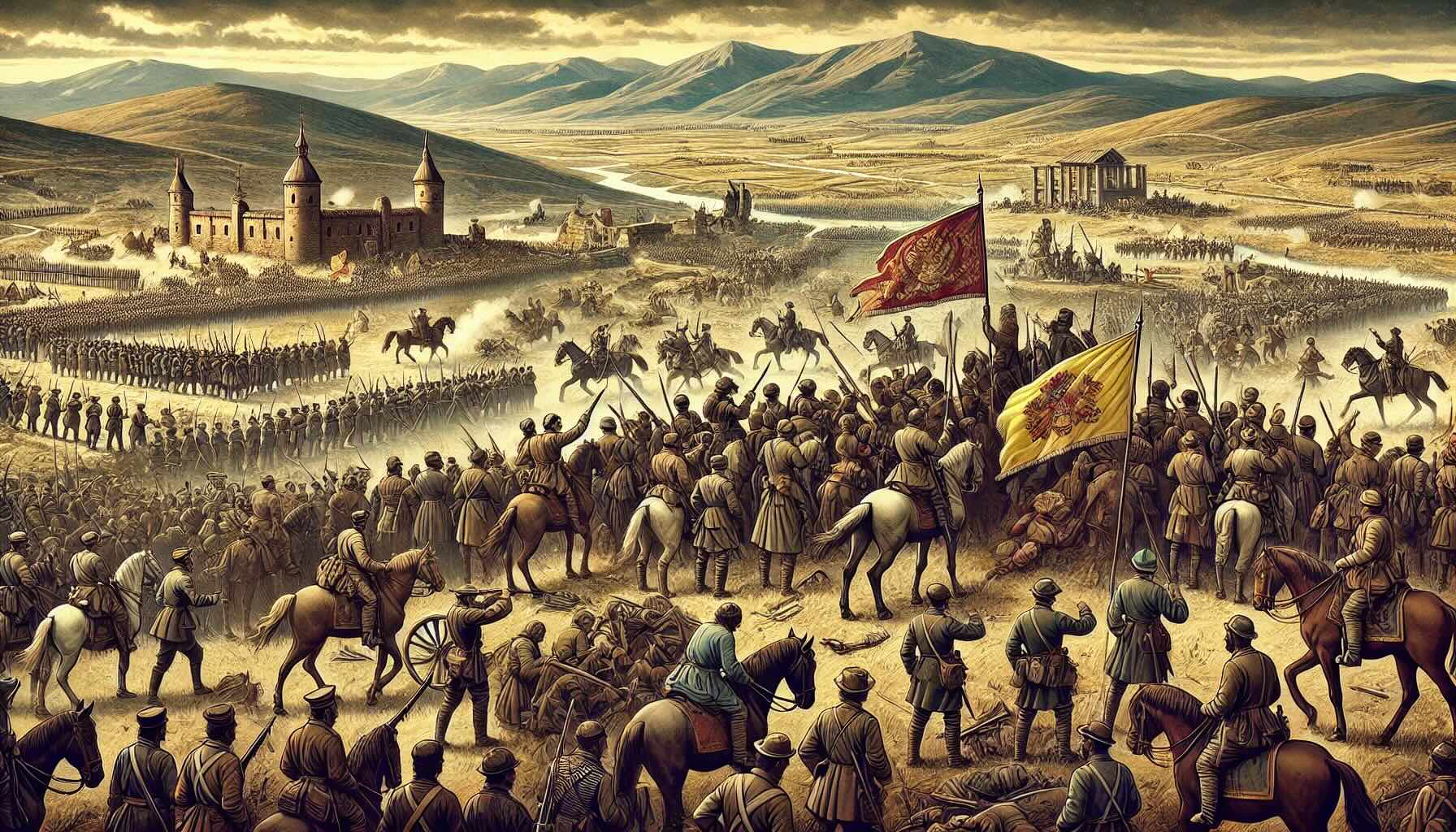
What was the Denisko Uprising? The Denisko Uprising was a significant event in Polish history, occurring in 1863. This rebellion was part of the larger January Uprising, where Poles, Lithuanians, and Belarusians fought against Russian rule. The uprising was named after its leader, Antoni Denisko, a passionate patriot who sought independence for his homeland. Despite being outnumbered and outgunned, the insurgents displayed remarkable bravery and determination. They used guerrilla tactics to challenge the Russian forces, hoping to inspire a broader national revolt. Although the uprising ultimately failed, it left a lasting impact on Polish national identity and resistance movements.
Key Takeaways:
- The Denisko Uprising was a rebellion in the 19th century sparked by economic hardships and led by a former soldier named Denisko, inspiring changes in land ownership and government reforms.
- The uprising's impact on society led to significant changes in land ownership, government reforms, and inspired other movements, becoming a symbol of resistance and courage celebrated in folklore and literature.
The Denisko Uprising: A Brief Overview
The Denisko Uprising, also known as the Denisko Rebellion, was a significant event in history. It involved a series of revolts and battles that shaped the political landscape of the region. Here are some fascinating facts about this historical event.
Origins of the Uprising
Understanding the roots of the Denisko Uprising helps us grasp its significance.
- The Denisko Uprising began in the early 19th century, sparked by widespread discontent among the peasantry.
- Economic hardships and oppressive taxation were major catalysts for the rebellion.
- The uprising was named after its leader, Denisko, a charismatic figure who rallied the masses.
- Denisko was a former soldier who had fought in previous conflicts, giving him military experience.
- The rebellion initially started in rural areas before spreading to urban centers.
Key Figures in the Uprising
Several individuals played crucial roles in the Denisko Uprising, each contributing to its development.
- Denisko, the leader, was known for his strategic mind and ability to inspire his followers.
- Maria, Denisko's wife, was instrumental in organizing support among women and children.
- General Ivanov, a military officer, defected to the rebels' side, bringing valuable tactical knowledge.
- Father Petrov, a local priest, provided moral support and helped maintain the rebels' morale.
- The Blacksmiths' Guild, a group of skilled artisans, supplied weapons and armor to the rebels.
Major Battles and Skirmishes
The Denisko Uprising saw numerous battles and skirmishes, each with its own impact on the rebellion's progress.
- The Battle of Greenfield was the first major confrontation, resulting in a decisive victory for the rebels.
- The Siege of Redfort lasted for weeks, with both sides suffering heavy casualties.
- The Skirmish at Blue River was a turning point, as the rebels managed to capture a key supply route.
- The Battle of Iron Hill saw the rebels using guerrilla tactics to outmaneuver the government forces.
- The Final Stand at Denisko's Ridge marked the end of the uprising, with the rebels ultimately defeated.
Impact on Society
The Denisko Uprising had far-reaching effects on society, influencing various aspects of life in the region.
- The rebellion led to significant changes in land ownership, with many estates redistributed to the peasantry.
- It prompted the government to implement reforms aimed at addressing the grievances of the lower classes.
- The uprising inspired other movements and rebellions in neighboring regions.
- It highlighted the importance of unity and solidarity among oppressed groups.
- The Denisko Uprising became a symbol of resistance and courage, celebrated in folklore and literature.
Legacy of the Denisko Uprising
The legacy of the Denisko Uprising continues to be felt today, with its lessons and stories passed down through generations.
- Monuments and memorials have been erected in honor of the uprising and its leaders.
- Annual commemorations and reenactments keep the memory of the rebellion alive.
- The uprising is studied in schools as a pivotal moment in the region's history.
- It has been the subject of numerous books, films, and documentaries.
- The Denisko Uprising serves as a reminder of the power of collective action and the enduring spirit of resistance.
Final Thoughts on the Denisko Uprising
The Denisko Uprising remains a pivotal moment in history. It showcased the resilience and determination of people fighting for their rights. This event not only influenced the region's political landscape but also left a lasting impact on cultural and social dynamics. Understanding these 25 facts offers a deeper appreciation of the struggles and triumphs experienced during this period. Whether you're a history buff or just curious, these insights provide a comprehensive look into the uprising's significance. Remember, history isn't just about dates and events; it's about the stories of individuals who shaped the world we live in today. By learning about the Denisko Uprising, we honor those who fought for a better future and gain valuable lessons for our own lives.
Frequently Asked Questions
Was this page helpful?
Our commitment to delivering trustworthy and engaging content is at the heart of what we do. Each fact on our site is contributed by real users like you, bringing a wealth of diverse insights and information. To ensure the highest standards of accuracy and reliability, our dedicated editors meticulously review each submission. This process guarantees that the facts we share are not only fascinating but also credible. Trust in our commitment to quality and authenticity as you explore and learn with us.
